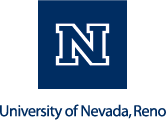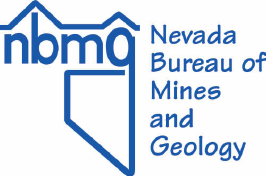Link to our Data Products Page:
Quick Links to Data Products:
The plates frames are defined using Euler rotation poles found in the supplement of
Kreemer et al., 2014. The table is also separately available
at this link.
The format of the file is latitude(deg), longitude(deg), magnitude (deg/Myr), plate ID. To be entirely consisent with the assumed kinematic model, plate velocity at any latitude and longitude can then be computed using the formulas (B1) and (B2) in Kreemer et al., 2014, where Earth’s radius R = 6371 km.
Each station is associated with one or more tectonic plates, as defined by
Bird, 2002. Every station is on at least one plate, but some stations can have more than one plate associated with them if the second plate is close (<200 km).
For every station there is at least one large plate in the set assigned to it (the large plates being PA, NA, SA, EU, AF, AN, AU).
A text file that lists the plates associated with each station is available
HERE.
Vertical Land Motion (VLM) Using GPS Imaging:
Downloadable Lists of GPS Data Holdings:
- Download list of GPS station latitude, longitude, and heights
-
- Download list of GPS stations sorted (in reverse order) by date added to NGL system (yyyy_ddd)
-
- Stations with 24 hour sample rate solutions, final orbits, 2 week latency.
-
- Stations with 24 hour sample rate solutions, rapid orbits, 24 hour latency.
-
- Stations with 5 minute sample rate solutions, rapid orbits, 24 hour latency.
-
- Stations with 5 minute sample rate solutions, ultra rapid orbints, 1.5 hour latency.
-
The linked text files above are updated daily and include: Station Name, Latitude, Longitude, Height, XYZ coordinates, data begin and end dates, number of solutions and station operator original site name.
Database of Potential Step Discontinuities
Decimal Year Convention:
Monuments
For about half of all GPS stations processed at NGL we have been able to extract and tabulate information about the station monuments from the IGS log files.
This information includes description of the monument, its foundation construction, height, depth, and geologic enviroment when available.
This information can be used to assess the factors contributing to station stability, error checking and tracking down issues in the time series, studies of noise characteristics, etc.
This information is now posted in the:
Monument Table
Loading Predictions
We now provide displacement predictions from models of geophysical surface loading. Three-component displacement predictions from non-tidal atmospheric, non-tidal ocean, hydrological model, and GRACE mascon-based equivalent water height, and reservoirs within the continentnal united states are included for all days for which we provide 24 hour solutions.
The data are provided as east, north, up triplets concatenated to the end of lines in our .tenv3 files.
The new files with the appended triplets can be found linked from every station page
and also
en masse at this link.
See this
Readme File for an explanation of the columns in the extended .tenv3 files.
Plots of the predictions for vertical motions are also available via a tab on the station pages
next to the time series plots, or for all stations in
this directory.
System Status Notes
(1) On August 25, 2024 JPL orbit and clock products changed to IGS 2020. This may result in a small discontinuity in time series positions and/or uncertainties
on this date until NGL completes reprocessing of the entire set of data holdings with new ITRF 2020 reference frame, software, and products.
We have placed a record in the step data base and station pages on this date to indicate this. That step record will be removed once our reprocessing is complete.
New NGL Final products will are expected to be complete in 2025.
(2) A change has been made to the time series plots.
The values for the trends that are annotated on the plots were previously the MIDAS rate.
However, it is sometimes the case that the slope of the red line fitting the time series is not the MIDAS rate.
This happens when it is not possible to calculate a MIDAS rate (e.g., if the time series is too short) or if the
MIDAS rate was not used because a large earthquake occurred nearby requiring introduction of exponential decay terms to the time series model.
Now the annotated values are always the trend used to plot the red line, which is sometimes the MIDAS rate, but not always.
Employment Opportunities
Graduate Student Opportunities
We are always interested in hearing from students or potential students in the fields of geodesy, tectonics, geophysics, geomatics, and mathematics who are interested in carrying out research in geodesy while studying for an M.S. or Ph.D in Geophysics at UNR.
Postdoctoral Opportunities
There are currently no advertised openings at the NGL, but we anticipate opening several postdoc positions in the near future.
For further information see:
International Students also see:




